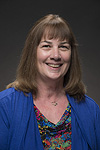Tell us about your GISMO!
 |
|
Cherri Schmidt
|
Cherri Schmidt, head of OPTT, wrote this column.
In my last column, I encouraged Fermilab's inventors to share their great ideas with the Office of Partnerships and Technology Transfer (OPTT) early and often. While I can't say my call to action resulted in deafening silence, it was clear from the few whispers of response that we need to do much more to help you identify and possibly protect Fermilab's intellectual property.
One of the most interesting messages was that people didn't even know if they had invented something that needed to be disclosed. We also learned that the existing Record of Invention (ROI) form has been an obstacle, using "patent speak" instead of plain English. As a result, we are leaving too many great ideas on the shelf.
That is why we are launching GISMO. GISMO stands for Great Ideas Submitted More Often. GISMO is designed to start a conversation between you and the OPTT team early in the creation process so that we can help you identify what ideas should be disclosed and help guide you through the process for those ideas that should be protected.
How does GISMO work?
1. It starts with a GISMO form, which asks you to describe your idea for a new technology in plain English. Just fill out the form and forward it to optt@fnal.gov.
2. We will then schedule a discussion with you to talk about your idea and determine if we can protect it through a patent or copyright.
3. If we decide that the idea can be protected, we will help you complete the more formal ROI so that we can disclose it to the Department of Energy.
4. You also may be invited to present your idea to the Invention Disclosure Committee, an interdisciplinary group of scientists and engineers that advises OPTT on patent and copyright decisions. In this event, OPTT staff will help you prepare a "pitch deck" to present your idea most effectively.
5. Finally, if your idea is selected for patent or copyright protection, OPTT will assist you throughout the patent application or copyright protection process.
Why do we want more disclosures? More disclosures should yield more high-quality patents and copyrights. More patents and copyrights give us a better platform for partnering with industry to transition technology created for science into commercial application. These spin-off applications, in turn, help us broaden the base of support for the laboratory.
Today, we are announcing a spring GISMO campaign that will run from now through May 31. I am challenging each of you to identify those ideas that might be patentable or copyrightable. As an added incentive, the division, center, section or office that generates the most GISMOs per capita during this campaign will receive $500 of additional employee morale funds that can help pay for a summer picnic or other event.
Tell us about your GISMO by visiting the OPTT website.
|